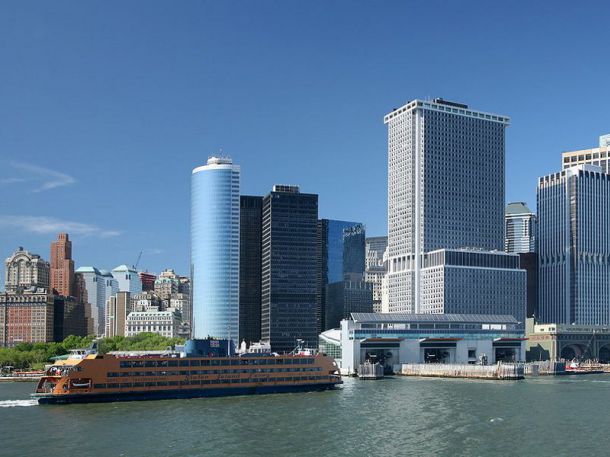
Hurricane Sandy was a serious eye-opener for New York City and the Tri-State area. It not only became apparent how exposed the city and the surrounding waterfront is, but also how unprepared the city is for climate changes which can include storms of Sandy’s caliber on a more regular basis. After seeing the damage done by the storm and the effects that are still seen in the city today, the question of how New York City can prepare for short-term resilience and long-term survival in a wetter future moves to the front line.The answer to this question is by no means clear-cut. With discussions on policy reform and changes in infrastructure development, decisions are being made about how the city should adapt to higher water levels and the higher frequency of storms like Sandy.
NYC’s Infrastructure
Certain parts of the infrastructure redevelopment are more obvious than others, and many proposed changes are not only related to the waterfront but to disaster control as a whole.

Some obvious infrastructure developments include a seawall or storm surge barrier that would protect the city from storm surges and high tides such as those which caused the flooding that crippled the city for nearly a week. New York City Council Speaker Christine Quinn proposed such a development with a cost approaching $20 billion. While this may seem like a ridiculous cost, Quinn mentioned at the recent Crain’s New York Business Conference discussing the Future of New York City that “New York has to embrace that it is not only a river city, but a port city. The fact that we forgot about this is why we were so susceptible to this storm in the first place.”So what does this mean? Crain’s New York Business, in an article about reconstructing the city, suggested that first NYC must look toward the development of a sea wall to protect the city, such as those used in Stanford, CT and internationally in cities such as London and countries such as the Netherlands. The city must also look for more creative ways to keep the city protected and sustainable.In a discussion regarding the future of the waterfront, the city’s public radio, WNYC reported a proposal for reusing scraps from construction projects to help create reefs that imitate the natural reefs seen in archipelagos. Similar tactics have been used off the shore of Delaware, which was not nearly as devastated by Sandy as neighboring New Jersey.Other suggestions for infrastructure changes include better protecting the electrical grid by moving any remaining above-ground power lines to a well protected underground grid to prevent power disruption. Crain’s also stressed the importance of developing a citywide Wi-Fi system that would have allowed telecommunication when much of Manhattan lost cellular phone service. Solar panels to provide temporary electricity when the grid system goes down were also proposed.
Policy Changes to Adapt as a River City
While it may seem that the future of New York’s waterfront should focus more on adapting infrastructure than on changes to public policy, policy changes can help shape how the population responds to disasters and the changes facing everyday New York.
According to Crain’s, building codes and zoning must be addressed to align them with the changing climate and incorporate technologies that are available to protect buildings from intense weather conditions.Another proposed change in policy would be taxes and tolls to help shape how the city commutes throughout the five boroughs. Some of these proposals include high occupancy vehicle restrictions as well as developing a more robust and useful ferry system to enable residents to commute to work easily when other modes of transportation are not available.A critical issue is the necessary tax dollars and federal aid required to fund these massively expensive but necessary projects to prepare New York to embrace its future as a river city. Taxpayers in New York City have previously rejected measures to increase spending related to infrastructure development, though perhaps the sight of post-Sandy New York will change public opinion on this. Now that the city is in need of billions for necessary infrastructure projects, we will need to see if the government is willing (and able) to help fund the projects necessary to keep New York City as resilient an economy as it has been in the past.
The New York City Waterfront’s Future
While there is no definitive answer as to what the New York City waterfront’s future will look like, it is clear that policy makers from politicians to urban planners agree that the 520 miles of waterfront must not only be protected, but also embraced. Doing so enables New Yorkers to adapt as citizens of a river city and be more prepared when massive storms and significant flooding occur.Discussions on how to prepare for a wetter future were taking place prior to the storm hitting the region, though Sandy has certainly added urgency to the discussion. The Van Alen Institute ironically hosted a discussion on how New York City can learn from the Dutch in preparing for a wetter future just two weeks before the storm hit New York City. The discussion focused on the storm that ravaged the Netherlands in the 1950’s and how their response has since prepared the country for rising water levels and climate change over the next 100 years. The focus was on how New York City needs to take a similar course of action.So – what is the good news? Mayor Bloomberg pointed out in his December 6 press release that while adapting the city will be a challenge, NYC is well on its way toward finding solutions:
“The biggest challenge that we face is adapting our city to risks associated with climate change. And meeting that challenge will require us to take a leap into the future. But I think, the good news is, compared to any other American city, we’ve got a running head start.”
Now it’s time to show that the city and the Tri-State area can take action on one of the biggest challenges of the 21st century.

